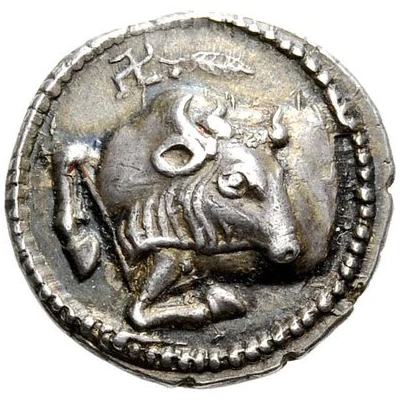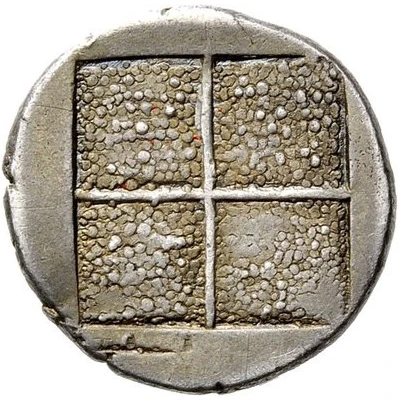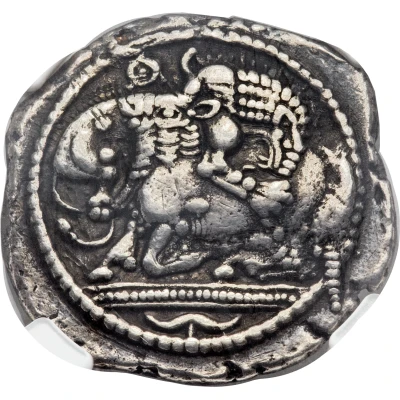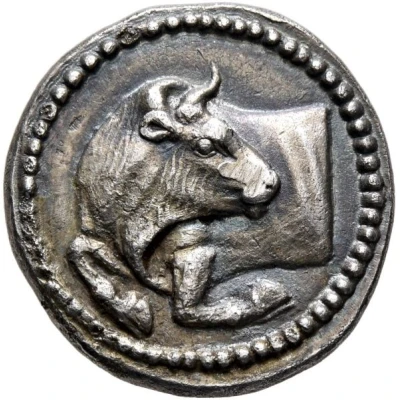
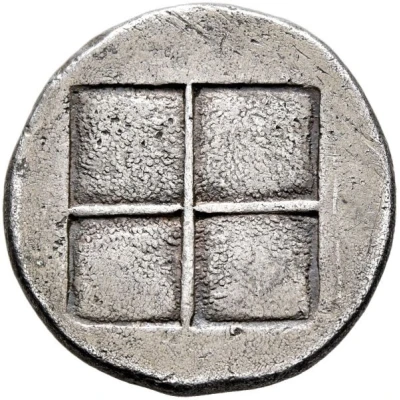

© Leu Numismatik
Tetrobol - Akanthos 470 BC - 430 BC
| Silver | 2.2 g | 16 mm |
| Issuer | Akanthos (Macedon) |
|---|---|
| Type | Standard circulation coin |
| Years | 470 BC - 430 BC |
| Value | Tetrobol (⅔) |
| Currency | Drachm |
| Composition | Silver |
| Weight | 2.2 g |
| Diameter | 16 mm |
| Shape | Round (irregular) |
| Technique | Hammered, Incuse |
| Demonetized | Yes |
| Updated | 2024-10-10 |
| Numista | N#88297 |
|---|---|
| Rarity index | 93% |
Reverse
Quadripartite incuse square with granulated recesses.
Interesting fact
The Tetrobol coin from Akanthos features a unique design on its obverse side, depicting a young boy, known as a "kouros," who is kneeling and holding a goat. This design is a common motif in ancient Greek art and symbolizes the importance of agriculture and livestock in the ancient Greek world. The coin's reverse side features a quadripartite incuse, which is a pattern of four squares within a larger square, creating a cross-like design. This design was commonly used on ancient Greek coins and served as a symbol of the four directions, representing the unity and stability of the ancient Greek world.
